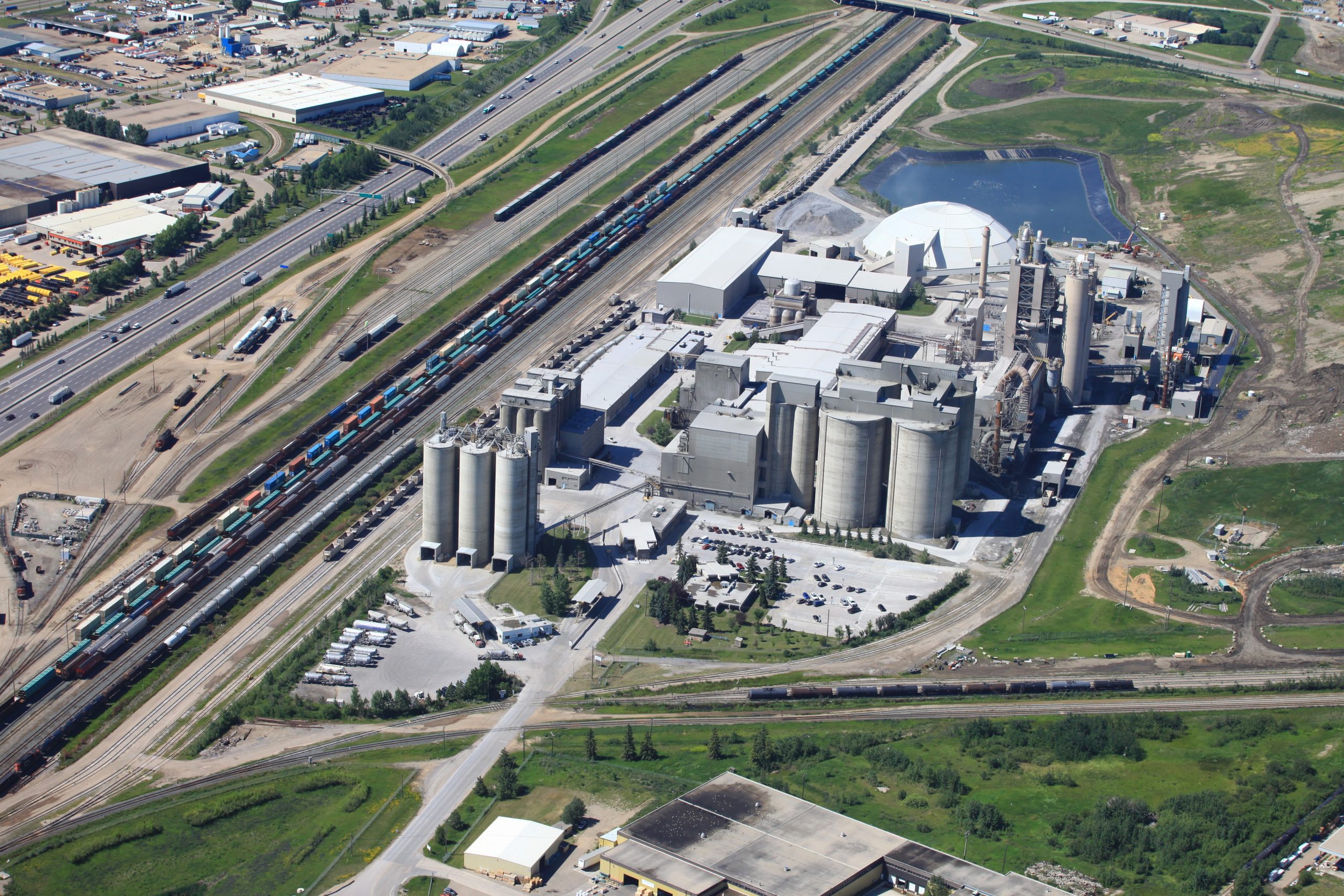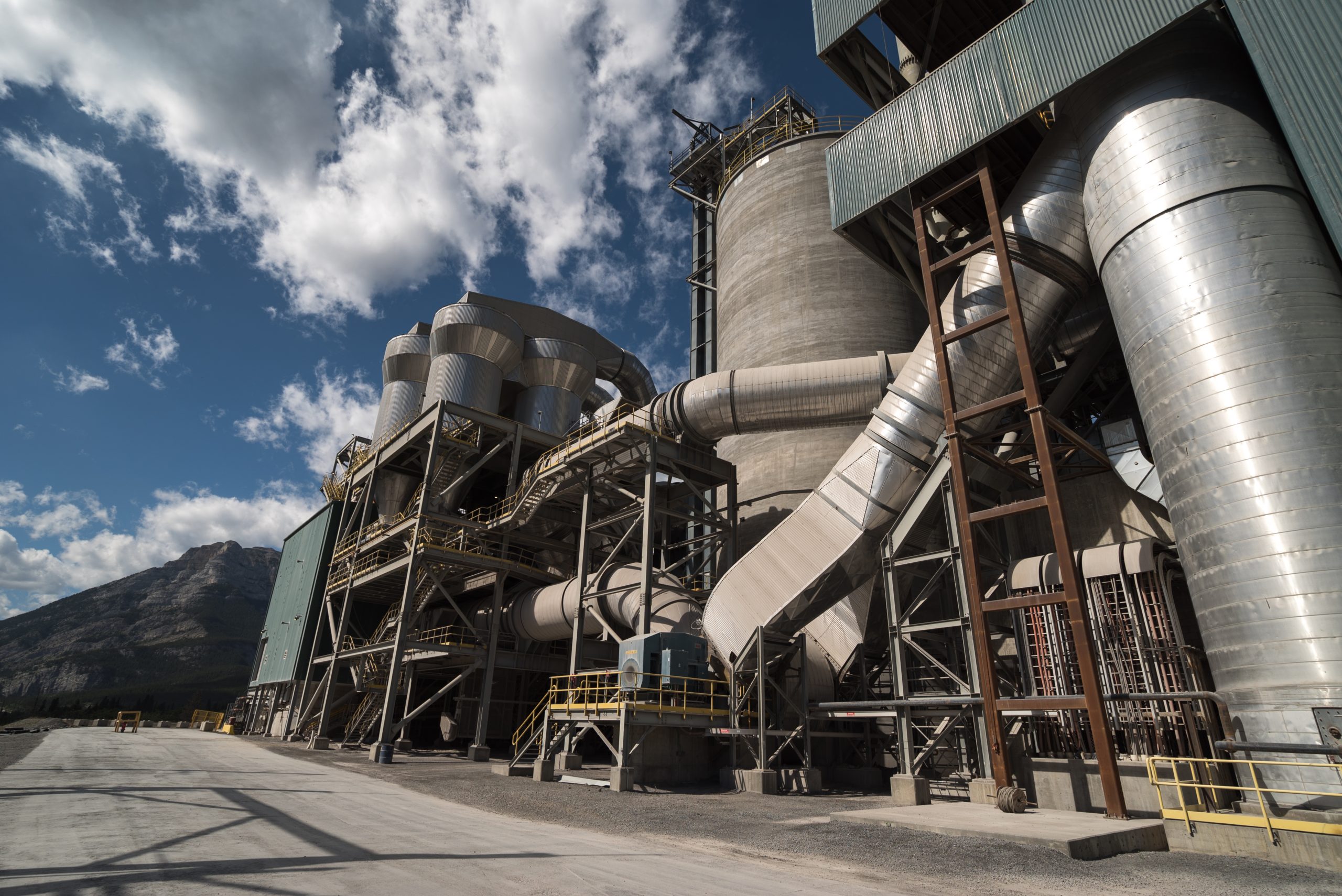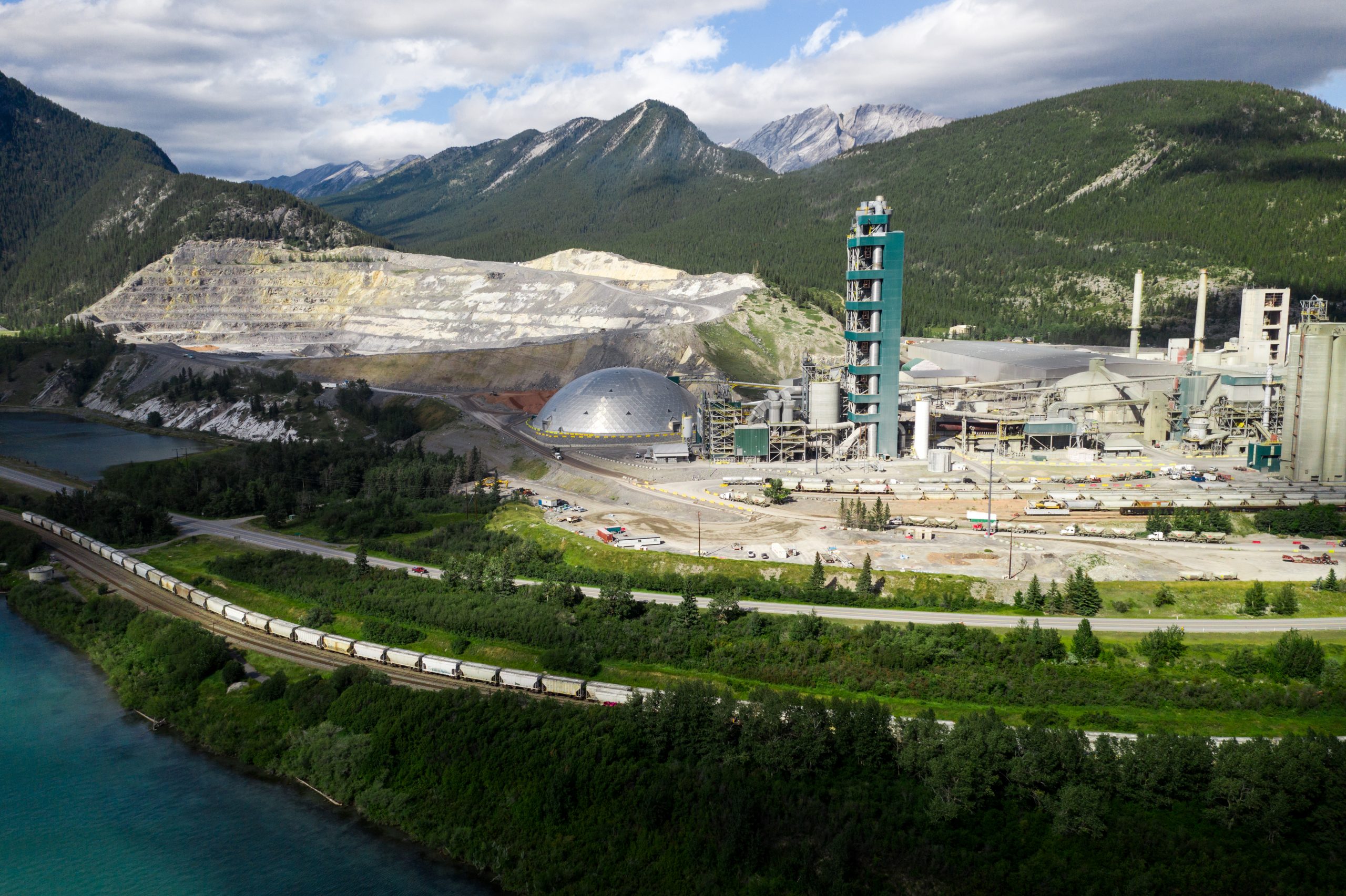Why should you care about concrete? Let’s break it down. Every day, we interact with it. It makes up our sidewalks, roads, bridges, offices, and the foundations of our homes, hospitals, airports, and more. In fact, concrete is by far the world’s most-used construction material.
Concrete is also an important driver of both Canada’s and Alberta’s economies. The Canadian concrete industry contributes a total of $76 billion annually to the country, employing 166,000 people at over 1,000 facilities across the nation. Alberta is also a leader in this space. The province is home to a healthy concrete sector that supports 39,000 jobs and contributes $16 billion to the economy, as well as two world-class cement production facilities that export product to the US and elsewhere in Canada.

Because of its omnipresent nature, concrete has a critical impact on the world’s CO2 emissions. The industry is the world’s second-largest industrial CO2 emitter, producing approximately 8 per cent of emissions globally and 1.4 per cent of emissions in Canada. Cement, which is the main ingredient of concrete and the “glue” that holds it together, contributes most of those emissions. By developing new technologies in Canada, we can decarbonize our own industry and then transfer these technologies to the rest of the world, while maintaining economic competitiveness.
Emissions Reduction Alberta (ERA) and the Cement Association of Canada (CAC) have partnered to present examples of decarbonization technologies in a recently published paper: Scaling Innovation in Alberta Heavy Industry: 10 Case Studies of Innovation & Collaboration in the Concrete Sector, presented at the Transport Association of Canada Conference in the Fall of 2023. Together, we outline real world examples of technology development and deployment to demonstrate progress the industry has made towards its net-zero goals. The technologies we discuss range from the use of carbon nanotubes as a kind of “nano-rebar” in construction, to maximizing the ability of concrete to absorb CO2 from its environment – acting as a carbon sink, not unlike a tree does this through photosynthesis.
How do we achieve a net-zero concrete sector? CAC recently released Concrete Zero, a plan for the industry to get to net zero emissions by 2050. The plan is aimed at reducing emissions in five areas, or “5 Cs”, of the cement and concrete value chain: clinker, cement, concrete, construction, and carbon uptake. Each “C” has a unique reduction strategy.
Alberta’s carbon pricing system on industrial emitters, the Technology Innovation Emissions Regulation (TIER) fund, allocates money to ERA to invest in emissions reduction technologies that is actively supporting each of these Cs. Over the last 10 years, the TIER fund has enabled ERA to devote $70 million to emissions reduction technology in the concrete industry. ERA requires industry matching for all our investments, and every dollar we spend generates more than $7 of economic activity.

Like I said, Alberta is home to promising technology and industry leaders intent on reducing concrete emissions across all the “5 Cs.” Some example technologies from our paper are highlighted below, and you can read the paper to find out more across all ten case studies.
Using waste as fuel
One straightforward, near-term way to decarbonize up to 30 per cent of the concrete sector’s emissions is to replace the fossil fuels that are used to heat the kiln during cement production. With support from ERA, Lafarge Exshaw and Heidelberg Edmonton, Alberta’s two cement plants, are both replacing 30-50 per cent of the fossil fuels used in their cement kilns with waste streams that would otherwise be landfilled. Not only does this provide a more sustainable pathway for this waste, but these “alternative fuels” will also reduce emissions. ERA has invested $12.3 million into these two projects, and both facilities will enter operations in the coming months, creating a near-term win for the industry.
Carbon Capture, Utilization, and Storage (CCUS)
While alternative fuels can reduce some concrete emissions, more than 50 per cent of the emissions at a cement plant are inherent to the chemical process of cement production, and therefore, can’t be abated by a simple fuel substitution. That means for the foreseeable future, retrofit installations to capture and permanently store those emissions will be essential to decarbonizing the concrete industry.
In Alberta, Heidelberg Materials is a leader in CCUS, with the goal of making the Edmonton Cement Plant the first in the world to deploy carbon capture at commercial scale. Earlier this fall, they installed a pilot system using Mitsubishi Heavy Industry’s amine capture technology, marking an important milestone towards full-scale CCUS deployment. Back in 2019, ERA committed $1.4 million to the plant to conduct a feasibility study to assess the technical and economic viability of the technology. That study helped Heidelberg secure a signed agreement with the Federal Government this year to support the proposed $1.4 billion project. This is a significant project.
New ways of making cement altogether
As we look further into the future, entirely new cement chemistries could replace some of the production we know today. ERA recently invested $2 million in ZS2 Technologies, who has developed a next-generation cement production method to create magnesium-based cement (MBC), a greener alternative to traditional Portland cement. Z2S is partnering with the critical minerals sector to recover magnesium alongside lithium, a valuable material used in battery manufacturing. MBC directly sequesters CO2 and replaces the need for CO2-intensive conventional cements. While the technology is still some years away from full-scale deployment, at full implementation, it has an emissions reduction potential of greater than 80 per cent.
Next steps
These and other examples show how the concrete industry is demonstrating technology leadership. Of course, there is a large amount of work to be done to realize a net-zero future beyond advancing technology. CAC has prepared a set of recommendations, ranging from green procurement standards to cross-border mechanisms to support lower emissions. Support to innovative technologies such as ERA pilots can help de-risk some of these gaps and enable new technologies to gain acceptance in the market. Continued collaboration between ERA, CAC, and government bodies responsible for codes and standards and who purchase much of the world’s concrete will be of utmost importance.
At ERA, we are betting big on a net zero concrete sector, and we are excited to see the industry investing in so many exciting technology pathways. Alberta has the technology to get to Concrete Zero across the 5 Cs of concrete decarbonization, and as usual, Alberta-based companies are leading the way forward with determination and innovation.

